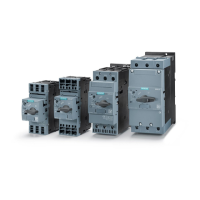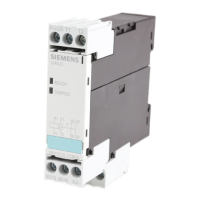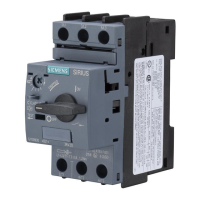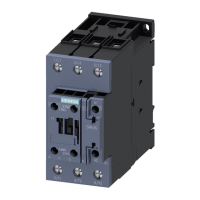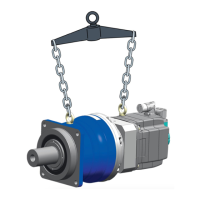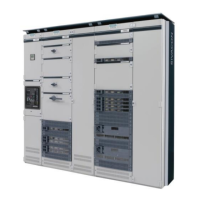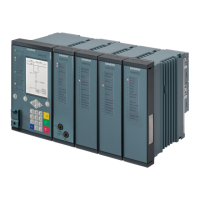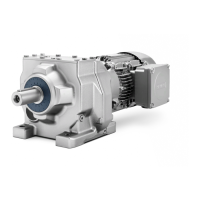SIRIUS 3RV2 motor starter protectors
4.5 Configuration
SIRIUS Innovations
System Manual, 01/2011, A8E56203870002-03
399
To return the tripping limits to the normal range, the setting of the overload release has to be
corrected. The following table shows the adjustment correction factors for the various setting
ranges dependent upon the converter's pulse frequency.
Table 4- 6 Adjustment correction factors for different setting ranges
Pulse frequency [kHz]
Setting
range/rated
current
0 2 4 6 8 10 12 14 16
3.2 to 40 A 1.00 1.07 1.12 1.16 1.18 1.19 1.21 1.22 1.23
0.5 to 2.5 A 1.00 1.08 1.13 1.17 1.21 1.24 1.26 1.28 1.29
0.32 to 0.4 A 1.00 1.09 1.15 1.21 1.25 1.29 1.33 1.35 1.37
0.16 to 0.25 A 1.00 1.10 1.17 1.24 1.28 1.33 1.38 1.42 1.46
Application example
Motor starter protector with setting range 1.1 to 1.6 A downstream of a frequency converter
with a pulse frequency of 8 kHz and motor current rms value at rated load: 1.2 A.
Setting: 1.2 A x 1.21 = 1.45 A
Making this adjustment compensates the high-frequency currents. The tripping current is in
the normal range.
NOTICE
Harmonics
The harmonics can cause the rms value of the motor current to be higher than the motor
rated current. In such cases, undesirable tripping can occur in spite of a correction being
made.
To rectify the situation, the rms value of the motor current has to be determined at rated
load and used as the base current for the correction described above. Only measuring
instruments which are able to reproduce the true rms value up to the prevailing frequencies
are suitable for determining the values. Good examples include hot-wire instruments.
Although moving-iron measuring instruments are in principle also rms instruments, they can
only be used for frequencies up to 1 kHz and, therefore, are not compatible with the
majority of the scenarios described above. Commercially available multimeters or clip-on
ammeters are generally not suitable for taking measurements in these cases.
4.5.13.2 Capacitive leakage currents
Despite adjustment correction undesirable tripping can occur in individual systems.
Extensive tests have shown that in systems with pulsed voltages other effects can transpire
which reduce the tripping current of the overload release or increase the current flowing
through the release.

